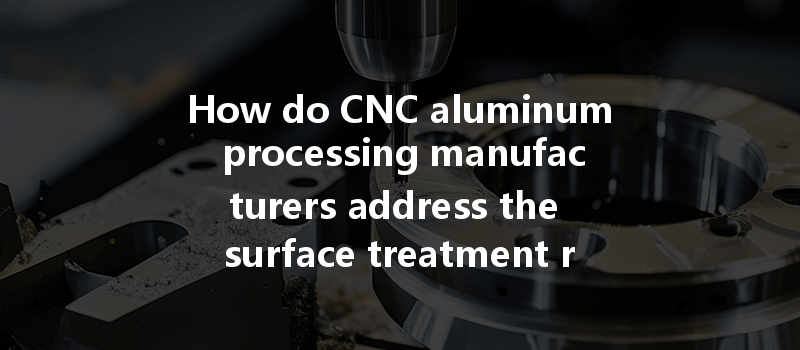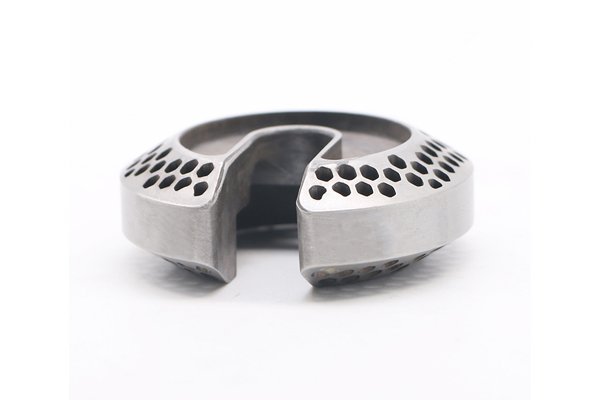Did you know that aluminum is the second most widely used metal in the world, right after steel? Exhibiting an impressive combination of lightweight properties, corrosion resistance, and workability, aluminum is not just a common choice; it’s a preferred material in industries ranging from aerospace to automotive manufacturing. However, to unlock its full potential, especially concerning aesthetics and performance, aluminum parts frequently require surface treatments. This blog delves into how CNC (Computer Numerical Control) aluminum processing manufacturers handle various surface treatment needs and the techniques employed to achieve superior results.
Understanding the Importance of Surface Treatment for Aluminum Parts
Why Surface Treatment?
Surface treatment enhances aluminum’s natural properties, addressing several crucial aspects:
A good understanding of these benefits sets the stage for CNC aluminum processing manufacturers to effectively meet the surface treatment needs and achieve optimal outcomes.
Popular Surface Treatment Techniques
CNC aluminum processing manufacturers utilize several techniques to achieve the desired surface properties. The most prominent methods include:
What It Is: Anodizing involves creating a thick oxide layer on the aluminum surface through an electrochemical process.
Benefits:
Process Overview:
What It Is: Powder coating involves applying a dry powder that is then cured under heat, forming a protective and decorative layer.
Benefits:
Process Overview:
What It Is: A process that alters the surface of aluminum at the chemical level to improve corrosion resistance without a significant buildup.
Benefits:
Process Overview:
What It Is: Polishing aims to achieve a smooth surface finish on aluminum, enhancing its reflective properties.
Benefits:
Process Overview:

What It Is: These are abrasive processes used to clean and texture the surface of aluminum parts.
Benefits:
Process Overview:
Challenges in CNC Aluminum Surface Treatment
While numerous techniques are available for treating aluminum surfaces, several challenges arise:
Aluminum alloys exhibit different properties; thus, treatments may not yield the same results across various alloy types. Understanding the specific alloy and its characteristics is vital for manufacturers.
Surface treatments vary in complexity and require specialized knowledge and skills. Investing in technical training and maintaining skilled personnel can be resource-intensive but is crucial for consistent quality.
Many surface treatment methods involve chemicals that are hazardous if not handled correctly. Ensuring compliance with environmental regulations is crucial for manufacturers.
Surface treatments can be costly, and manufacturers must balance quality with cost-effectiveness. Analyzing cost-benefit ratios is essential when deciding which treatment to implement.
Effective Strategies for CNC Aluminum Processing Manufacturers
To navigate the challenges and effectively address surface treatment requirements, manufacturers can adopt the following strategies:
Investing in R&D enables manufacturers to explore new surface treatments and improve existing methods. By staying ahead of technological advances, they can provide customers with the latest solutions.
Incorporating technologies such as automation and AI can streamline processes, reduce runtime, and improve accuracy during surface treatment operations.
Partnering with chemical treatment and materials science experts can lead to superior outcomes and innovations in treatment processes.
Understanding the unique demands of various industries (aerospace, automotive, etc.) will help manufacturers tailor their surface treatment offerings, ensuring compliance and performance expectations.
Implementing strict quality control measures at every step of the surface treatment process can significantly enhance the final product’s quality and reliability. Regular checks and evaluations can pinpoint issues before they become critical.
Case Studies: Successful Implementation of Surface Treatment Techniques
Case Study 1: Aerospace Component Manufacturer
An aerospace component manufacturer faced challenges in corrosion resistance for their aluminum parts. By integrating anodizing with a sealing process, they significantly increased the longevity of parts exposed to harsh environments, resulting in reduced maintenance costs for clients.
Case Study 2: Automotive Parts Supplier
An automotive supplier transitioned from traditional paint to powder coating for their components. The decision not only enhanced product durability but also appealed to aesthetics and reduced their environmental impact. This transition led to an increase in client satisfaction and market share.
Case Study 3: Electronics Industry Supplier
An electronics manufacturer needed a solution to enhance adhesion for paint applications. By using chemical conversion coating, they improved the adhesion of their coatings, leading to longer-lasting finishes and a decrease in customer complaints regarding peeling and flaking.
The Future of Surface Treatments in CNC Aluminum Processing
As industries become more technologically advanced, the demand for precision and high-quality finishes is growing. New surface treatment technologies, including laser etching, digital coating solutions, and eco-friendly processes, are set to revolutionize how manufacturers approach aluminum surface treatments.
Emphasis on Sustainability
With increasing awareness about environmental issues, manufacturers must consider eco-friendly surface treatments and sustainable practices. Water-based coatings and other green alternatives present viable options that should gain traction in the coming years.
In summary, CNC aluminum processing manufacturers play a pivotal role in enhancing the performance and aesthetic appeal of aluminum components through various surface treatment techniques, including anodizing, powder coating, chemical conversion, polishing, and more. Understanding the benefits, challenges, and effective strategies for implementation enables manufacturers to provide superior products tailored to industry standards.
As the market continues to evolve, staying abreast of technological advancements will be crucial for manufacturers aiming to maintain a competitive edge. Thus, investing in R&D, technical expertise, and quality control will pave the way for success in the ever-growing world of CNC aluminum processing.
Reflecting on the significance of surface treatments highlights their impact on not only product performance but also on customer satisfaction and market competitiveness. Evaluating these techniques opens doors to extensive opportunities within diverse industries, making this a crucial aspect worth considering for anyone involved in aluminum processing.






